Preface
Contents
Chapter 1 Introduction: Intuitive Theory of Sliding Mode Control
1.1 Main Concepts of Sliding Mode Control
1.2 Chattering Avoidance: Attenuation and Elimination
1.2.1 Chattering Elimination: Quasi-Sliding Mode
1.2.2 Chattering Attenuation: Asymptotic Sliding Mode
1.3 Concept of Equivalent Control
1.4 Sliding Mode Equations
1.5 The Matching Condition and Insensitivity Properties
1.6 Sliding Mode Observer/Differentiator
1.7 Second-Order Sliding Mode
1.8 Output Tracking: Relative Degree Approach
1.8.1 Conventional Sliding Mode Controller Design
1.8.2 Integral Sliding Mode Controller Design
1.8.3 Super-Twisting Controller Design
1.8.4 Prescribed Convergence Law Controller Design
1.9 Notes and References
1.10 Exercises
Chapter 2 Conventional Sliding Modes
2.1 Introduction
2.1.1 Filippov Solution
2.1.2 Concept of Equivalent Control
2.2 State-Feedback Sliding Surface Design
2.2.1 Regular Form
2.2.2 Eigenvalue Placement
2.2.3 Quadratic Minimization
2.3 State-Feedback Relay Control Law Design
2.3.1 Single-Input Nominal Systems
2.3.2 Single-Input Perturbed Systems
2.3.3 Relay Control for Multi-input Systems
2.4 State-Feedback Unit-Vector Control
2.4.1 Design in the Presence of Matched Uncertainty
2.4.2 Design in the Presence of Unmatched Uncertainty
2.5 Output Tracking with Integral Action
2.6 Output-Based Hyperplane Design
2.6.1 Static Output-Feedback Hyperplane Design
2.6.2 Static Output-Feedback Control Law Development
2.6.3 Dynamic Output-Feedback Hyperplane Design
2.6.4 Dynamic Output-Feedback Control Law Development
2.6.5 Case Study: Vehicle Stability in a Split-Mu Maneuver
2.7 Integral Sliding Mode Control
2.7.1 Problem Formulation
2.7.2 Control Design Objective
2.7.3 Linear Case
2.7.4 ISM Compensation of Unmatched Disturbances
2.8 Notes and References
2.9 Exercises
Chapter 3 Conventional Sliding Mode Observers
3.1 Introduction
3.2 A Simple Sliding Mode Observer
3.3 Robustness Properties of Sliding Mode Observers
3.4 A Generic Conventional Sliding Mode Observer
3.5 A Sliding Mode Observer for Nonlinear Systems
3.6 Fault Detection: A Simulation Example
3.7 Notes and References
3.8 Exercises
Chapter 4 Second-Order Sliding Mode Controllers and Differentiators
4.1 Introduction
4.2 2-Sliding Mode Controllers
4.2.1 Twisting Controller
4.2.2 Suboptimal Algorithm
4.2.3 Control Algorithm with Prescribed Convergence Law
4.2.4 Quasi-Continuous Control Algorithm
4.2.5 Accuracy of 2-Sliding Mode Controllers
4.3 Control of Relative Degree One Systems
4.3.1 Super-Twisting Controller
4.3.2 First-Order Differentiator
4.4 Differentiator-Based Output-Feedback 2-SM Control
4.5 Chattering Attenuation
4.6 Case Study: Pendulum Control
4.6.1 Discontinuous Control
4.6.2 Chattering Attenuation
4.7 Variable-Gain Super-Twisting Control
4.7.1 Problem Statement
4.7.2 The Variable-Gain Super-Twisting Algorithm
4.8 Case Study: The Mass–Spring–Damper System
4.8.1 Model Description
4.8.2 Problem Statement
4.8.3 Control Design
4.8.4 Experimental Results
4.9 Notes and References
4.10 Exercises
Chapter 5 Analysis of Sliding Mode Controllers in the Frequency Domain
5.1 Introduction
5.2 Conventional SMC Algorithm: DF Analysis
5.3 Twisting Algorithm: DF Analysis
5.4 Super-Twisting Algorithm: DF Analysis
5.4.1 DF of Super-Twisting Algorithm
5.4.2 Existence of the Periodic Solutions
5.4.3 Stability of Periodic Solution
5.5 Prescribed Convergence Control Law: DF Analysis
5.6 Suboptimal Algorithm: DF Analysis
5.7 Comparisons of 2-Sliding Mode Control Algorithms
5.8 Notes and References
5.9 Exercises
Chapter 6 Higher-Order Sliding Mode Controllers and Differentiators
6.1 Introduction
6.2 Single-Input Single-Output Regulation Problem
6.3 Homogeneity, Finite-Time Stability, and Accuracy
6.4 Homogeneous Sliding Modes
6.5 Accuracy of Homogeneous 2-Sliding Modes
6.6 Arbitrary-Order Sliding Mode Controllers
6.6.1 Nested Sliding Controllers
6.6.2 Quasi-continuous Sliding Controllers
6.7 Arbitrary-Order Robust Exact Differentiation
6.8 Output-Feedback Control
6.9 Tuning of the Controllers
6.9.1 Control Magnitude Tuning
6.9.2 Parametric Tuning
6.10 Case Study: Car Steering Control
6.11 Case Study: Blood Glucose Regulation
6.11.1 Introduction to Diabetes
6.11.2 Insulin–Glucose Regulation Dynamical Model
6.11.3 Higher-Order Sliding Mode Controller Design
6.11.4 Simulation
6.12 Notes and References
6.13 Exercises
Chapter 7 Observation and Identification via HOSM Observers
7.1 Observation/Identification of Mechanical Systems
7.1.1 Super-Twisting Observer
7.1.2 Equivalent Output Injection Analysis
7.1.3 Parameter Identification
7.2 Observation in Single-Output Linear Systems
7.2.1 Non-perturbed Case
7.2.2 Perturbed Case
7.2.3 Design of the Observer for Strongly ObservableSystems
7.3 Observers for Single-Output Nonlinear Systems
7.3.1 Differentiator-Based Observer
7.3.2 Disturbance Identification
7.4 Regulation and Tracking Controllers Driven by SM Observers
7.4.1 Motivation
7.4.2 Problem Statement
7.4.3 Theoretically Exact Output-Feedback Stabilization (EOFS)
7.4.4 Output Integral Sliding Mode Control
7.4.5 Precision of the Observation and IdentificationProcesses
7.5 Notes and References
7.6 Exercises
Chapter 8 Disturbance Observer Based Control: Aerospace Applications
8.1 Problem Formulation
8.1.1 Asymptotic Compensated Dynamics
8.1.2 Finite-Time-Convergent Compensated Dynamics
8.1.3 Sliding Variable Disturbed Dynamics
8.1.4 Output Tracking Error Disturbed Dynamics
8.2 Perturbation Term Reconstruction via a Disturbance Observer
8.2.1 SMDO Based on Conventional SMC
8.2.2 SMDO Based on Super-Twisting Control
8.2.3 Design of the SMC Driven by the SMDO
8.3 Case Study: Reusable Launch Vehicle Control
8.3.1 Mathematical Model of Reusable Launch Vehicle
8.3.2 Reusable Launch Vehicle Control Problem Formulation
8.3.3 Multiple-Loop Asymptotic SMC/SMDO Design
8.3.4 Flight Simulation Results and Analysis
8.4 Case Study: Satellite Formation Control
8.4.1 Satellite Formation Mathematical Model
8.4.2 Satellite Formation Control in SMC/SMDO
8.5 Simulation Study
8.6 Notes and References
8.7 Exercises
Appendix A Mathematical Preliminaries
A.1 Linear Algebra
A.1.1 Rank and Determinant
A.1.2 Eigenvalues and Eigenvectors
A.1.3 QR Decomposition
A.1.4 Norms
A.1.5 Quadratic Forms
Appendix B Describing Functions
B.1 Describing Function Fundamentals
B.1.1 Low-Pass Filter Hypothesis and Describing Function
B.1.2 Limit Cycle Analysis Using Describing Functions
B.1.3 Stability Analysis of the Limit Cycle
Appendix C Linear Systems Theory
C.1 Introduction
C.1.1 Linear Time-Invariant Systems
C.1.2 Controllability and Observability
C.1.3 Invariant Zeros
C.1.4 State Feedback Control
C.1.5 Static Output Feedback Control
Appendix D Lyapunov Stability
D.1 Local Results
D.2 Global Results
D.2.1 Quadratic Stability
Bibliography
Index
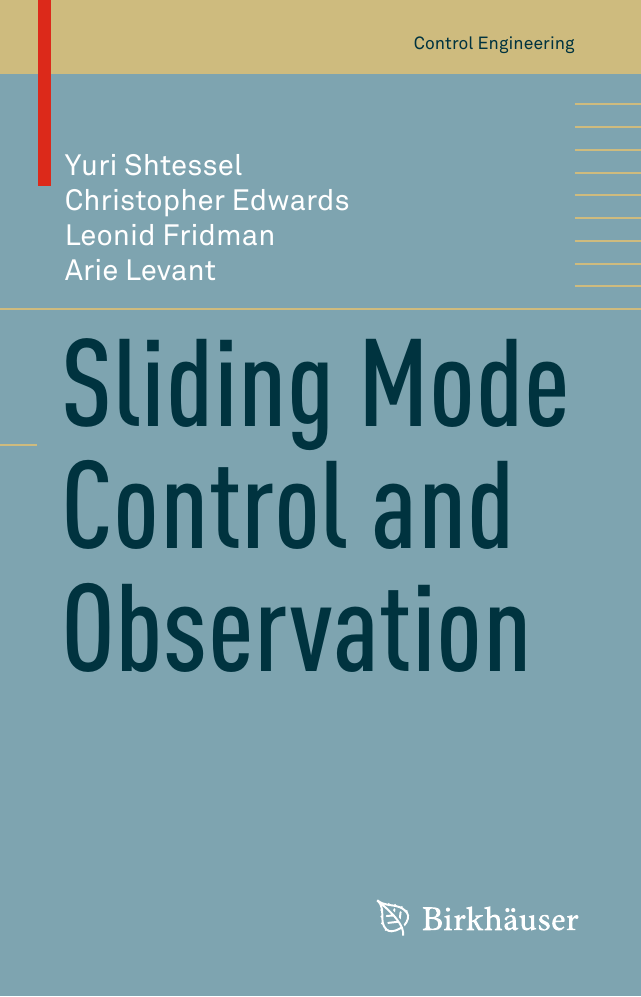

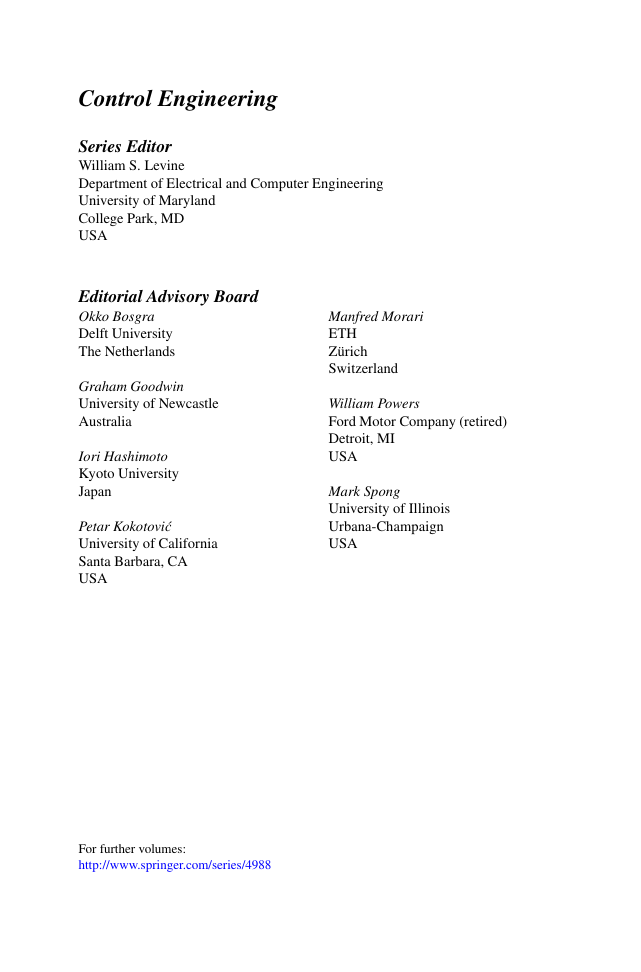
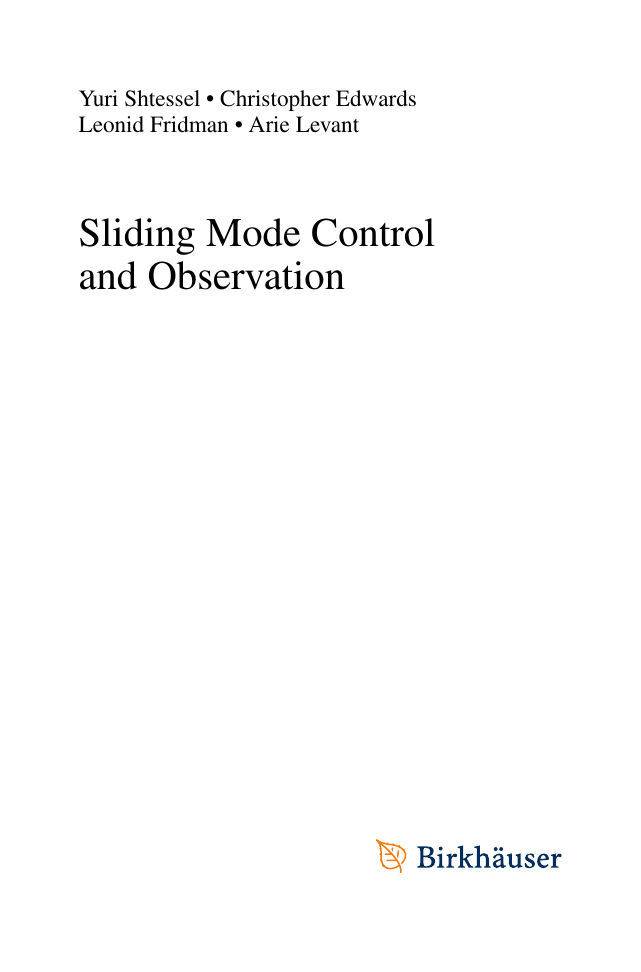
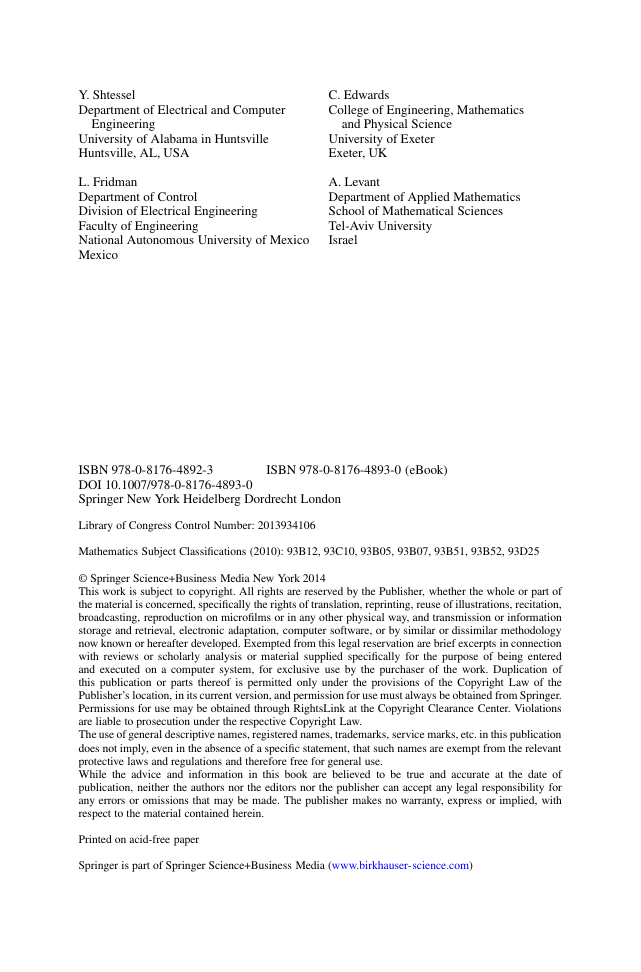
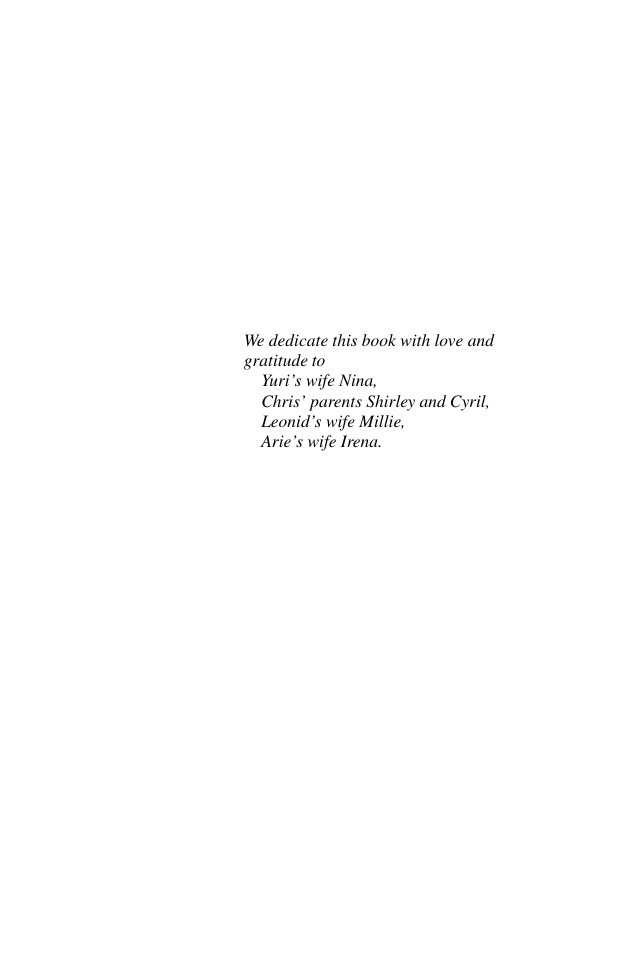

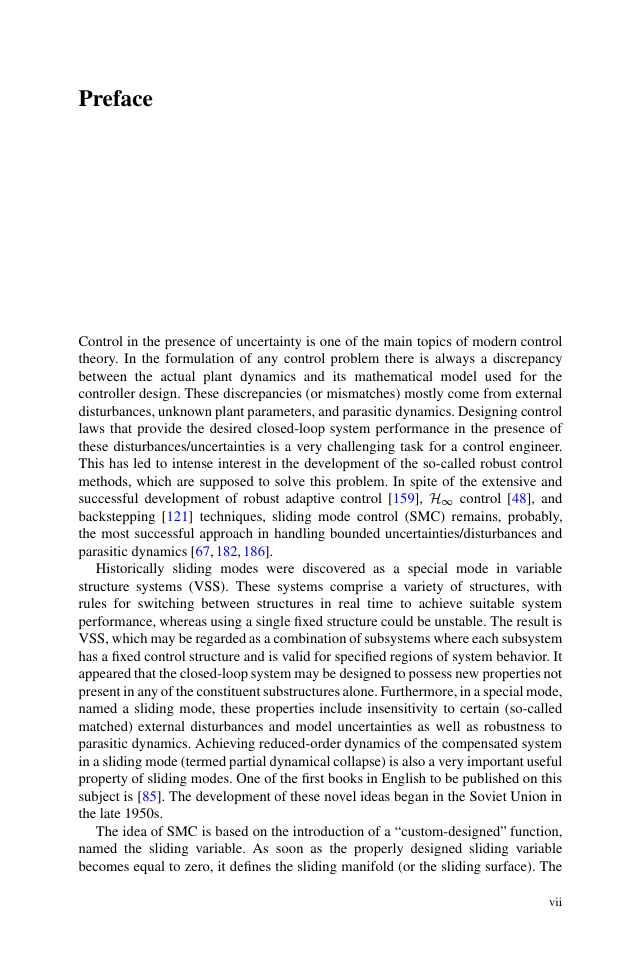








 2023年江西萍乡中考道德与法治真题及答案.doc
2023年江西萍乡中考道德与法治真题及答案.doc 2012年重庆南川中考生物真题及答案.doc
2012年重庆南川中考生物真题及答案.doc 2013年江西师范大学地理学综合及文艺理论基础考研真题.doc
2013年江西师范大学地理学综合及文艺理论基础考研真题.doc 2020年四川甘孜小升初语文真题及答案I卷.doc
2020年四川甘孜小升初语文真题及答案I卷.doc 2020年注册岩土工程师专业基础考试真题及答案.doc
2020年注册岩土工程师专业基础考试真题及答案.doc 2023-2024学年福建省厦门市九年级上学期数学月考试题及答案.doc
2023-2024学年福建省厦门市九年级上学期数学月考试题及答案.doc 2021-2022学年辽宁省沈阳市大东区九年级上学期语文期末试题及答案.doc
2021-2022学年辽宁省沈阳市大东区九年级上学期语文期末试题及答案.doc 2022-2023学年北京东城区初三第一学期物理期末试卷及答案.doc
2022-2023学年北京东城区初三第一学期物理期末试卷及答案.doc 2018上半年江西教师资格初中地理学科知识与教学能力真题及答案.doc
2018上半年江西教师资格初中地理学科知识与教学能力真题及答案.doc 2012年河北国家公务员申论考试真题及答案-省级.doc
2012年河北国家公务员申论考试真题及答案-省级.doc 2020-2021学年江苏省扬州市江都区邵樊片九年级上学期数学第一次质量检测试题及答案.doc
2020-2021学年江苏省扬州市江都区邵樊片九年级上学期数学第一次质量检测试题及答案.doc 2022下半年黑龙江教师资格证中学综合素质真题及答案.doc
2022下半年黑龙江教师资格证中学综合素质真题及答案.doc